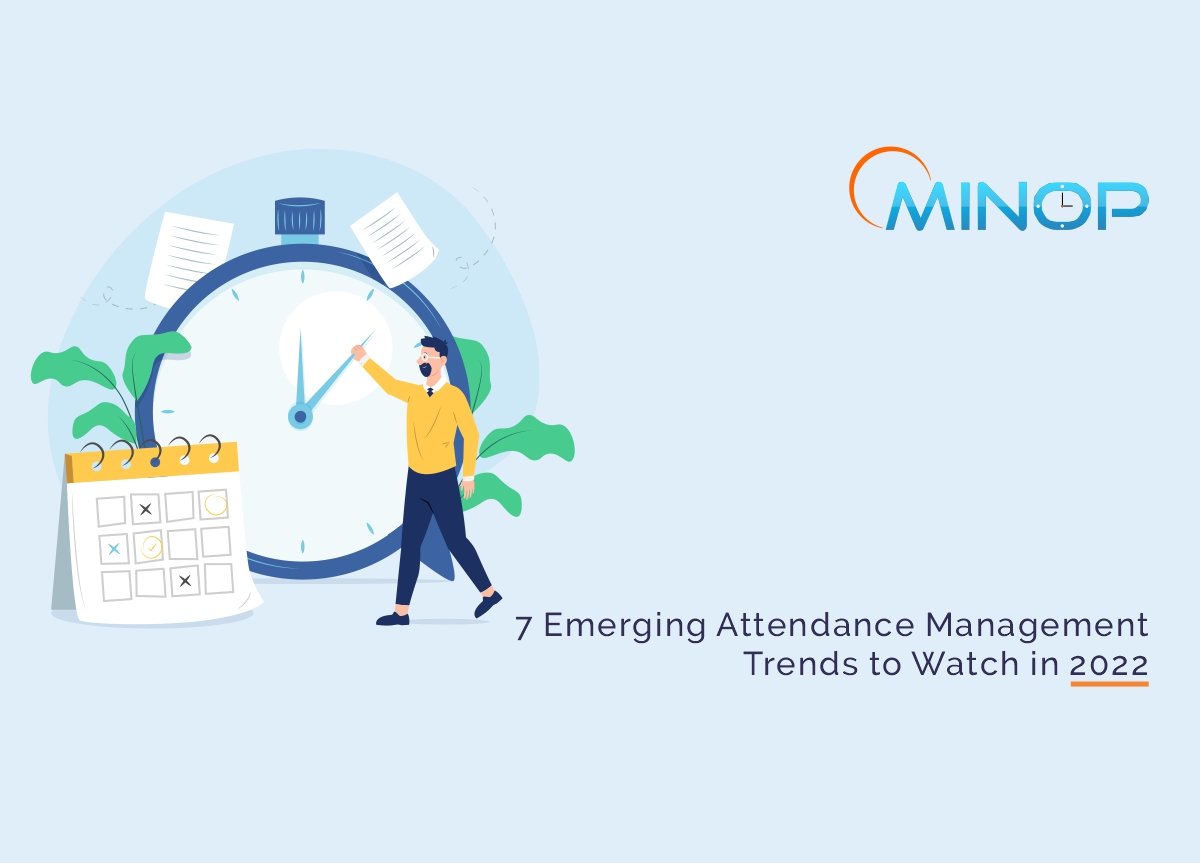7 Emerging Attendance Management Trends to Watch in 2022
Posted On:- 13 January 2022 By:- Vinod Rathore
Attendance Software for Employee Monitoring
In the last two years, we have seen the corporate world struggling with the effective management of remote employees. Companies needed to be agile and responsive to match the dynamic environment resulting from the emergence of the pandemic. While some firms were fast enough to reap the benefits of the new normal, a few failed to do so. Now, the year has changed, but the question is back on the table: "Are the corporates completely ready to embrace all the changes related to attendance management?" Companies need to observe the new trends first to answer this question.
After undergoing a massive transformation in the last year, it will be intriguing to see what 2022 has in store for us. Let’s explore the top 7 emerging trends that will dominate attendance management in 2022.
1. Hybrid Work Model
The pandemic is not over yet; therefore, the corporate world will continue with the hybrid work model in which some employees work from home while others work on-premises. It is becoming more popular as it promises increased productivity, flexibility, and a work-life balance. According to a survey conducted by Nasscom and Indeed, roughly 70% of IT companies are attempting to improve the hybrid model.
Businesses have realised that remote work is more beneficial than they ever imagined before. Employers and employees have already accepted this new normal, so it should come as no surprise if it continues in the next year. However, as per business requirements, some offices may demand a certain percentage of their staff to come to work.
2. Geofencing
Many tasks, such as item delivery, technical visits, and healthcare services, necessitate people working from many places, making it difficult for employers to track them. Recognizing the requirement, software developers rapidly implemented geofencing functionality to track field personnel's time and position. When an employee enters or exits the geofence, a virtual workplace border, this GPS-based technology notifies the admin. It prevents buddy punching and time theft since employees must enter a geofence to log in, prohibiting them from logging in or out from their homes or on their way to work.
3. Employee psychological well-being
The pandemic took a toll on the mental health of the population. It is one of the causes of increased stress, anxiety, and depression among employees. And when employees are burned out, their absence rate increases, significantly hurting staff productivity and morale. As a result, businesses would prioritise employee mental health and provide them with more flexibility in terms of work hours, breaks, and leave.
4. Cloud-based attendance management
Manual attendance entry tools are so yesterday and are ineffective in this digital age. Cloud-based attendance management software has already replaced the traditional methods to take it to the next level. According to Allied Market Research, the global time and attendance software market size could reach $5,312 million by 2030. An automated attendance system delivers many benefits, like low administrative cost, eliminating unethical practices, customised reports, leave management, and accurate salary calculation.
5. Mobile Apps
Mobile phones have become an inseparable part of our lives. Therefore, it is no surprise that they are being used to track attendance. Attendance software developers sensed a need and responded by adding time and GPS monitoring tools to their mobile apps. Employees may use the mobile app to sign in and out, seek leave, and access other functions at their fingertips.
6. Employee Self-service portal
Applications for leave, shift changes, and leave correction are time-consuming processes as the employee needs to wait for the approval of the HR team. There was a need for ESS to fix all of these difficulties and to assist HR managers in keeping the team up to date without having to answer each employee's inquiries. It not only gives employees access to information and resources, but it also has other advantages, such as increased administrative job efficiency, increased transparency, real-time worker updates, and improved team morale.
7. Analytics and Reports
Ultimately, the data or reports assist the HR department in calculating working days and hours to compute employee salaries. The automated attendance system can help companies see patterns and trends in employee time data and give vital clues into the team's productivity and efficiency. It also helps the admin spot red flags that you'd have missed otherwise.
How to Be In Sync with Attendance Management Trends?
Without a doubt, a firm that refuses to adapt to changes or is not future-ready suffers considerable losses due to time theft, buddy punching, or other forms of fraud. Companies must keep up with future trends, which necessitates the effective use of technology.
If you are looking for the best attendance management software, you can go with Minop. It is a trusted employee time management software that big corporations rely on to manage staff performance. A company may track time and attendance for on-site or remote employees and freelancers; using Minop from any location and at any time.
Attractive features of Minop:-
Real-time monitoring
No need for Hardware
Customised reports
Holiday and leave management
ESS
Wrap Up
It is safe to say that a technology-driven attendance management system is critical for businesses amid the corona era and beyond. Companies are increasingly adopting a remote or hybrid work model, boosting the demand for automated attendance management. To design a robust staff monitoring and workforce management system, a corporation must examine all the emerging trends and develop HR strategies accordingly.

Comments